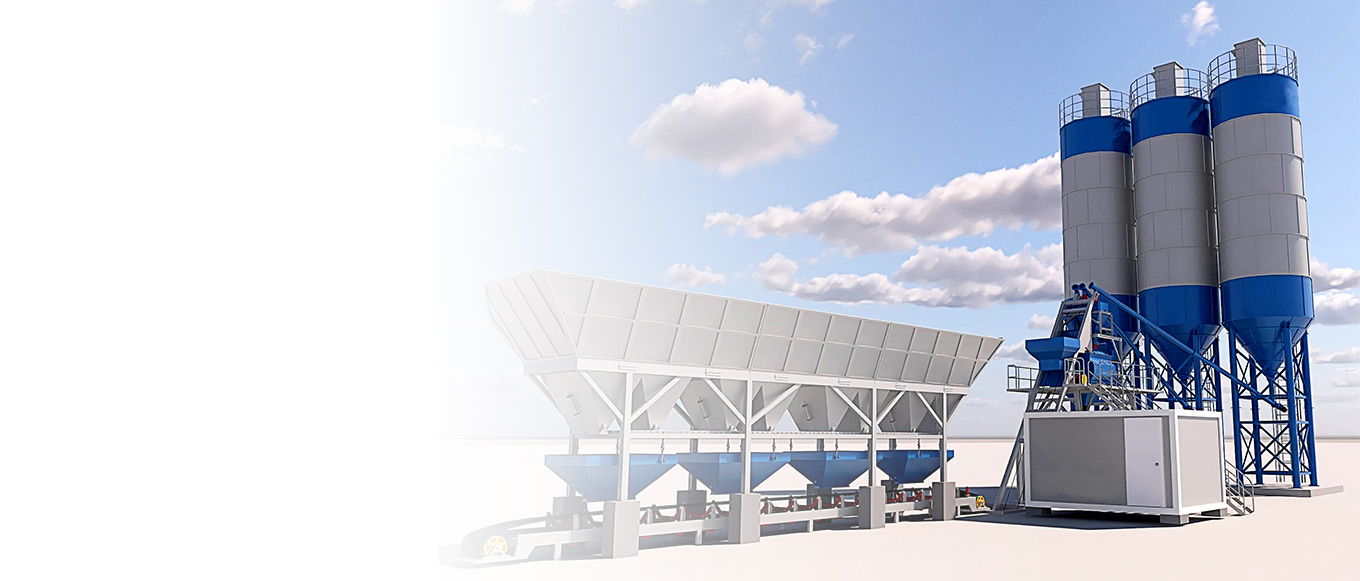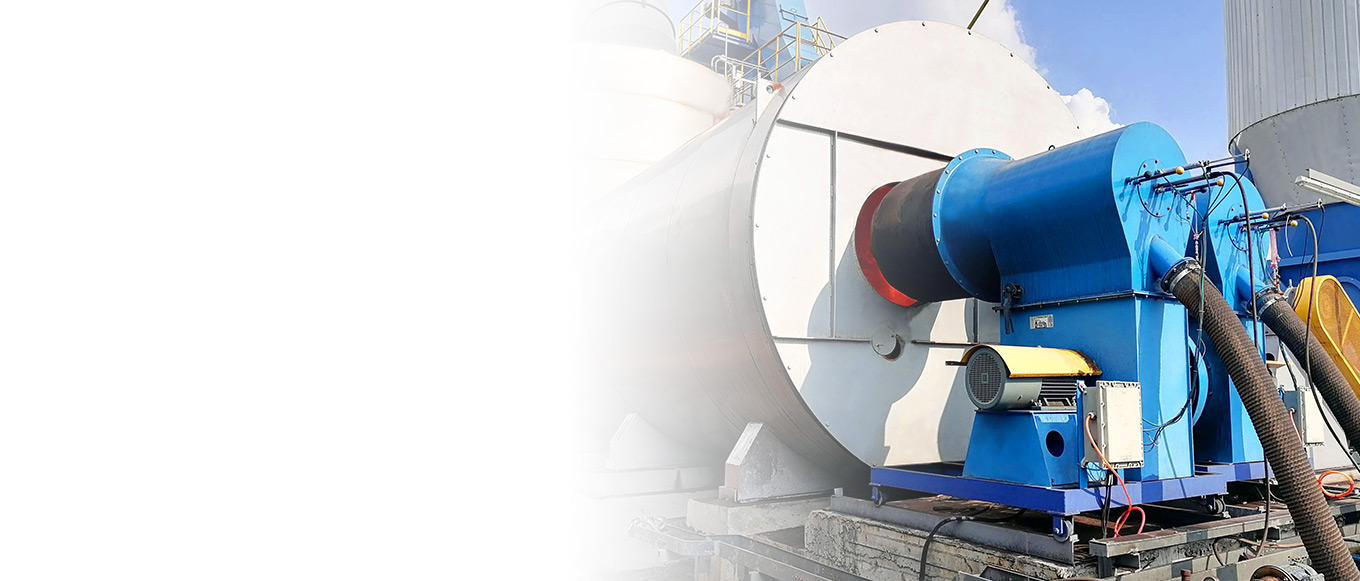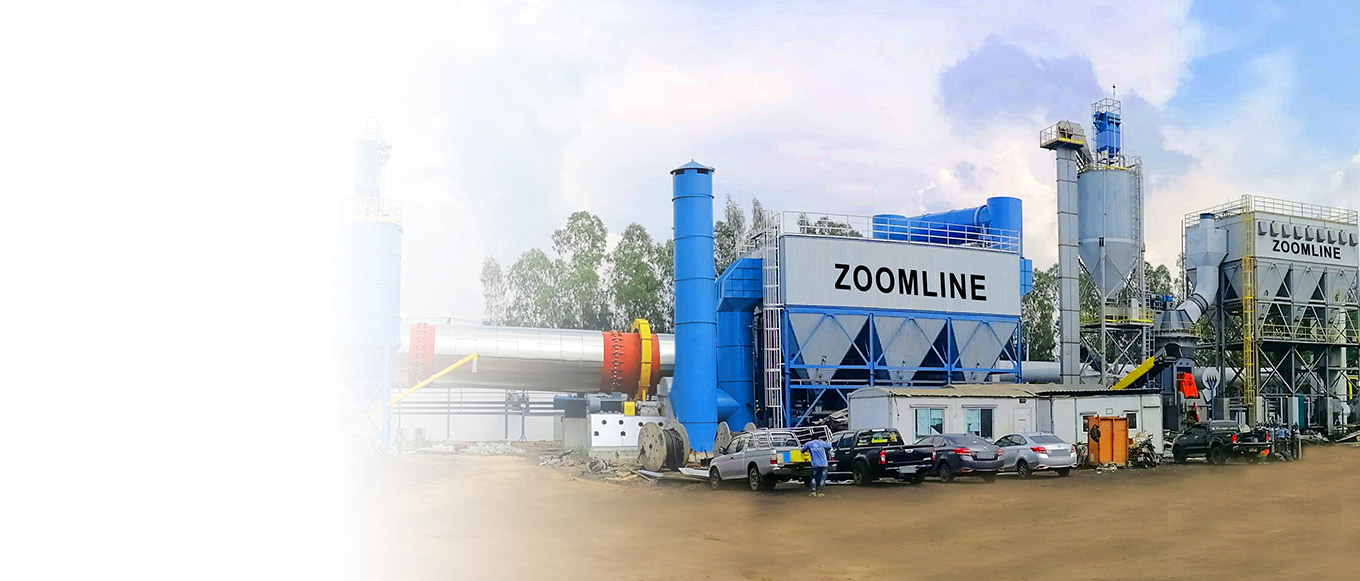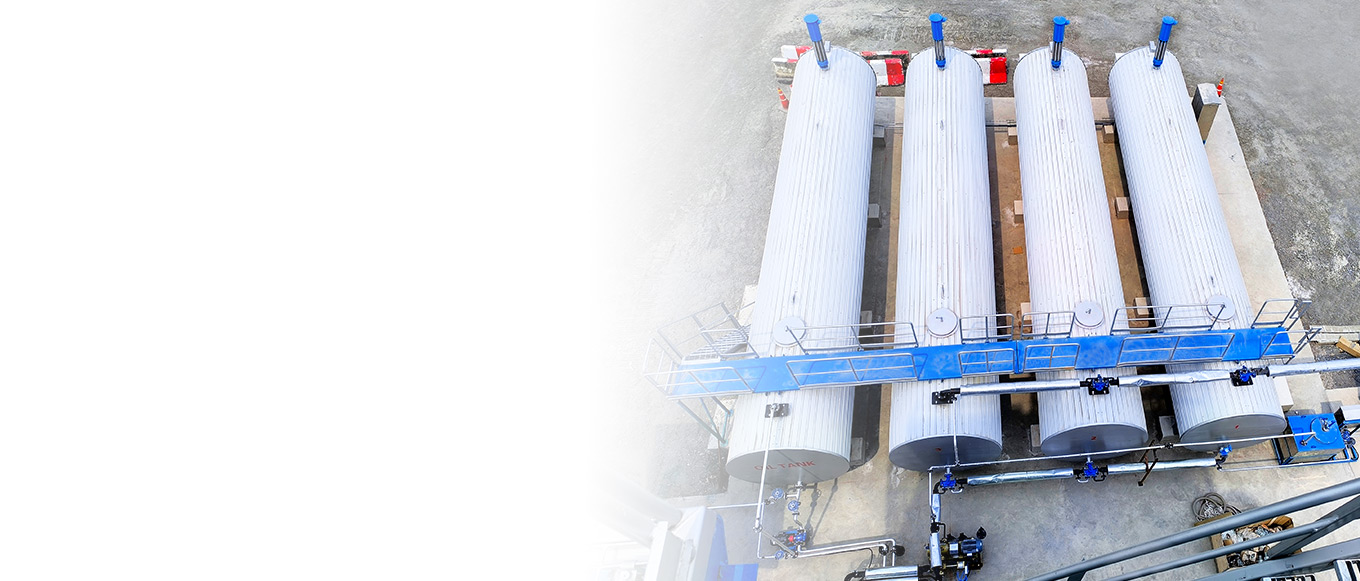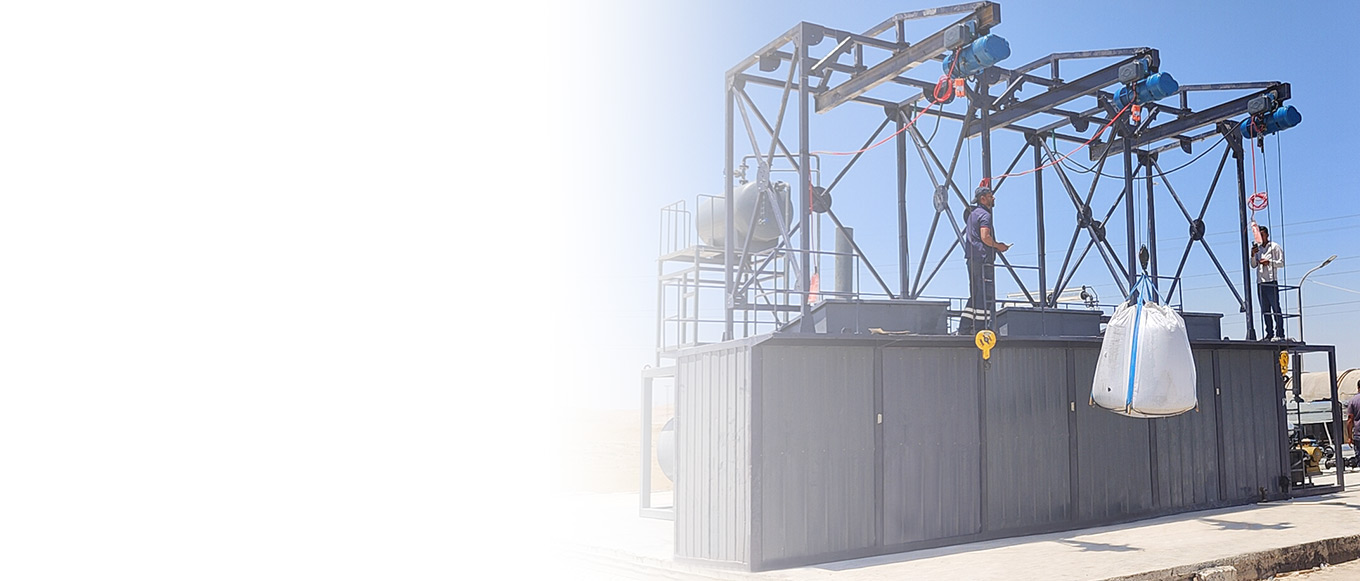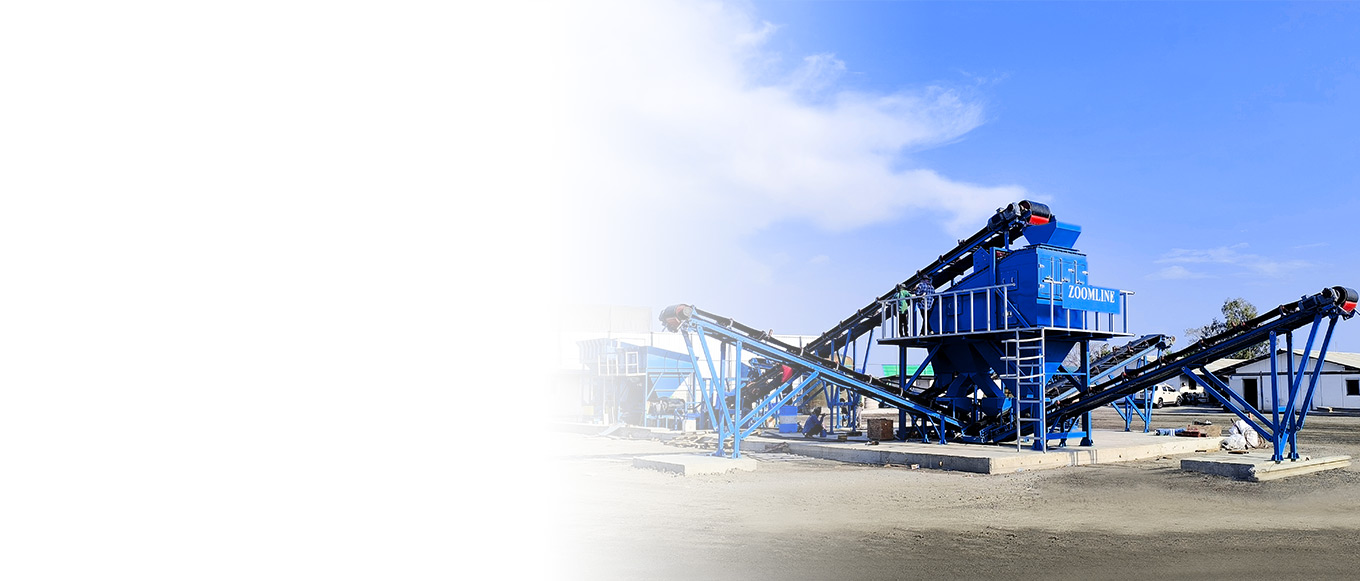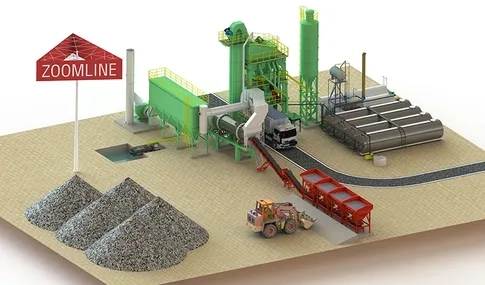The Importance of Asphalt Plant Maintenance
As a core piece of equipment in road construction, the stable operation of asphalt mixing plants directly affects the production quality of asphalt mixtures and the progress of engineering projects. Regular maintenance is a key means of ensuring the efficient and safe operation of equipment. It not only significantly improves production efficiency and reduces downtime losses caused by equipment failure, but also effectively extends the service life of equipment and reduces the risk of sudden safety accidents. This article will systematically elaborate on professional maintenance key points and operational standards across critical areas such as daily, periodic, seasonal, and long-term shutdown maintenance for asphalt mixing plants.
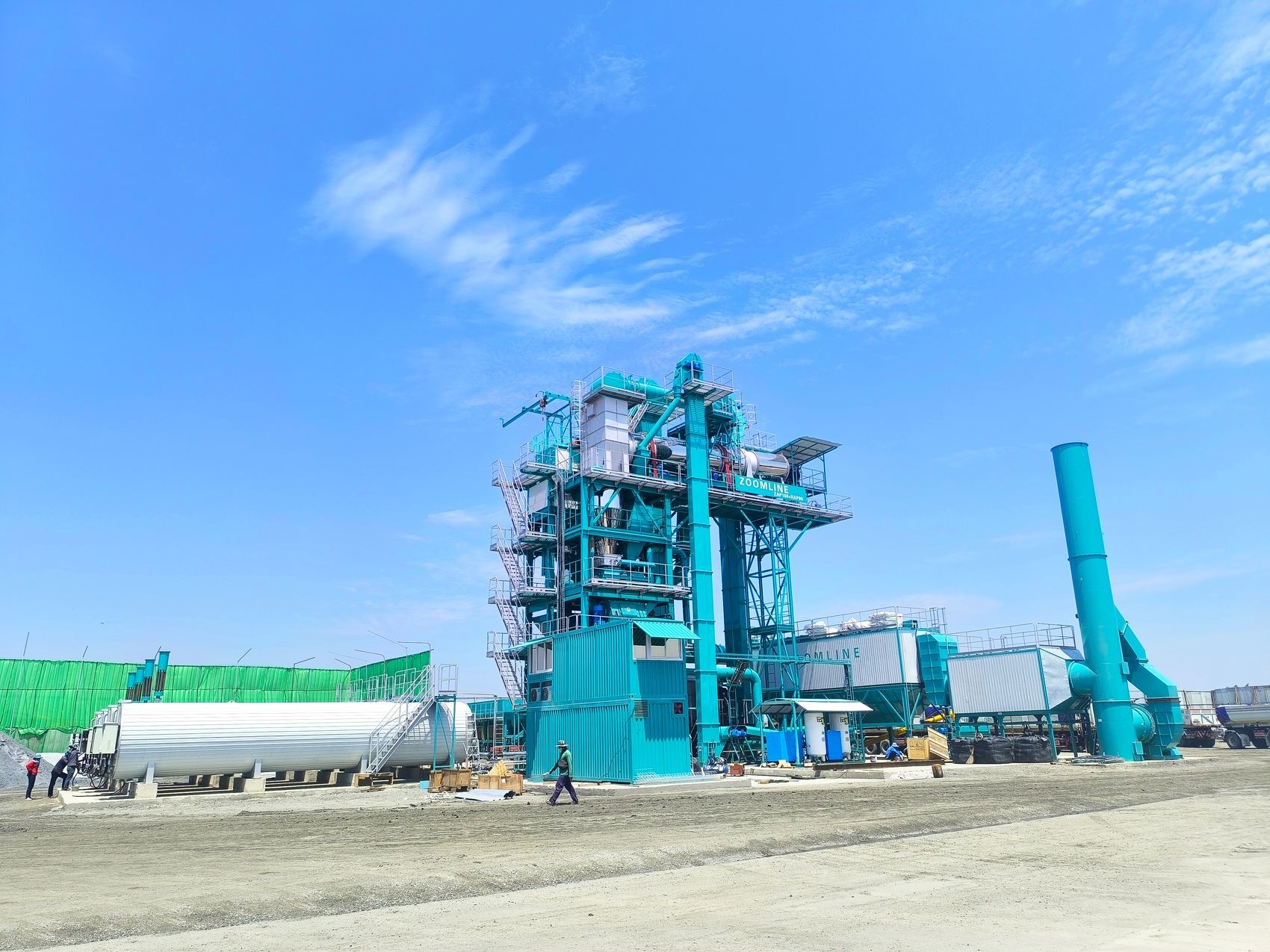
Daily and periodic maintenance of asphalt plant
Cleaning Procedures
Cleaning operations must follow a upstream-to-downstream sequence to prevent secondary contamination. Key areas such as the drying drum, hot material elevator, vibrating screen, hot material silo, and mixing drum must be thoroughly cleaned to remove residual dust, oil stains, asphalt, and aggregate. For baghouse dust collectors, compressed air reverse blowing should be used to clean pulse valves and blow pipes, and the sealing integrity of door seals should be inspected to prevent dust leakage; in the asphalt system, pump bodies, valves, pipes, and nozzles should be disassembled and inspected, and specialized cleaning agents should be used to remove asphalt deposits to ensure smooth material flow; In the powder material system, perform deep cleaning of the screw conveyor, recovery screw conveyor, elevator, and dust collector filter cartridges on the silo top to prevent dust accumulation and blockages; in the cold material supply system, clean the conveyor belt, weighing scale, and accumulated material beneath the conveyor to prevent material adhesion from affecting measurement accuracy.
Lubrication Management
Strictly follow the lubrication charts provided by the equipment manufacturer, clearly specifying the type of grease/lubricating oil, application quantity, and replacement cycle for each lubrication point. Precisely lubricate critical components such as conveyor idlers, elevator bearings, chains, vibrating screen bearings, mixer bearings, gearboxes, and motor bearings. Use oil analysis technology to regularly test the physical and chemical properties of lubricating oil (such as viscosity, acid value, and moisture content) to avoid faults caused by improper lubrication, such as abnormal bearing wear and gear adhesion.
Fastener and Component Checks
Use a combination of visual inspection and measurement to check the tension and damage of the vibrating screen mesh, and use a dial indicator to test the coaxiality of the vibrator; Conduct a thorough inspection of the welded areas of the elevator buckets, chain tension, and wear on the head and tail wheels; for mixers, check the torque of the bolts securing the liners and blades to prevent loosening and component detachment; for drying drums, measure the contact clearance between the support rollers and guide rollers to ensure stable drum operation. Additionally, perform load tests on the operating platform, safety ladders, and guardrails to ensure worker safety.
Visual inspections
Use an infrared thermal imaging camera to detect the temperature distribution of the belt conveyor to determine whether the belt is misaligned, slipping, or has local wear; use a chain elongation meter to monitor the degree of chain wear and adjust the tension in a timely manner; for vibrating screens, inspect the deformation of the screen frame and the blockage of the screen mesh; Measure the thickness of wear-prone components such as mixer blades and liners; when wear exceeds one-third of the design thickness, replacement is required; check the sensitivity of the material level sensors in the hot material silo to prevent production interruptions due to uncontrolled material levels; conduct integrity tests on the insulation layers of asphalt pipelines to prevent heat loss affecting asphalt flowability; Electrical systems should be inspected for cable insulation aging, and a megohmmeter should be used to test ground resistance. Pneumatic systems should be inspected for cylinder sealing integrity and solenoid valve response time.
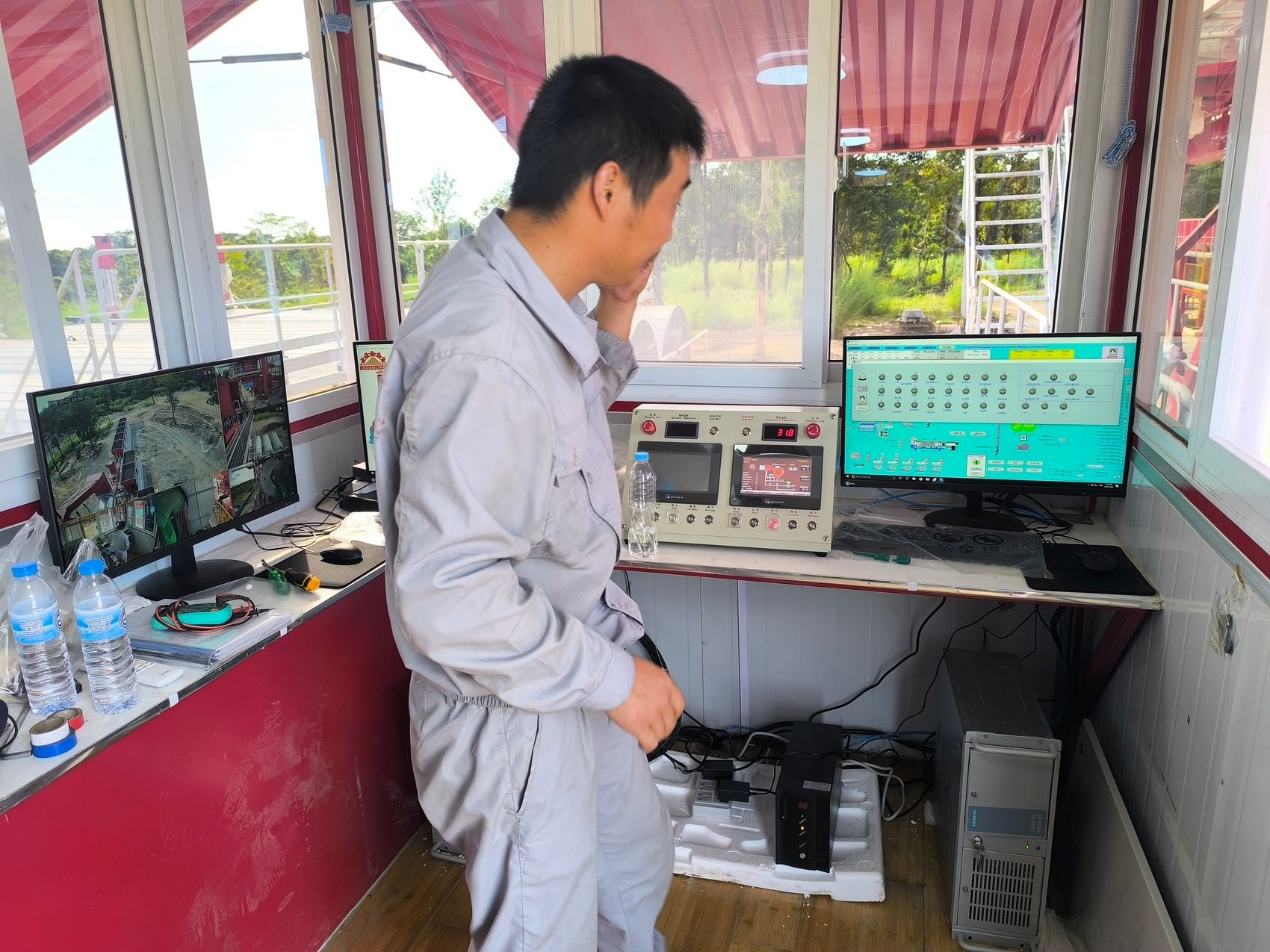
Regular Maintenance (Weekly / Monthly / By Operating Hours)
Vibrating Screen
- Weekly: Use ultrasonic cleaning technology to thoroughly remove small particles embedded in the screen holes, maintaining the screen’s efficient screening performance
- Monthly: Test the elastic modulus of rubber buffer blocks; replace them promptly when elasticity decreases by over 20% to ensure proper cushioning effect
- Every 500 operating hours: Disassemble and inspect the vibrator, precisely measure bearing clearance; replenish or replace high-temperature grease; use a vibration analyzer to detect vibration spectra and identify resonance hazards
Drying Drum
- Monthly: Inspect the wear condition and weld integrity of the lifting blades inside the drum; perform weld overlay repairs on severely worn areas; measure the contact stress between the support rollers and drum ring; dynamically adjust the position of the support rollers;
- Every 1,000 operating hours: Test the thermal conductivity of the drum insulation layer and repair damaged sections; use a laser alignment instrument to calibrate the meshing clearance of the drive gears to ensure smooth transmission
Burner
- Weekly: Clean the burner nozzles, ignition electrodes, and flame detectors; clear blocked spray holes
- Monthly: Monitor the pressure differential of the fuel/gas filter; replace the filter element promptly if it exceeds the limit
- Quarterly: Conduct thermal efficiency tests; precisely adjust the damper opening and fuel injection volume; calibrate the air-fuel ratio to 14.7:1 to ensure a stable blue flame
Baghouse Dust Collector
- Pressure Differential Control: When resistance exceeds 1200 Pa, automatically initiate the pulse cleaning program
- Monthly: Use a pulse leak detector to inspect filter bag damage and locate leak points
- Quarterly: Test the sealing integrity of lift valves and pulse valves, and replace aged sealing strips
- Annually: Perform dynamic balancing calibration on the fan impeller to prevent bearing damage
Mixer
- Monthly: Measure the gap between the blades and the liner (maintain at 3-5 mm); inspect the wear condition of the discharge door seal strips
- Every 800 operating hours: Replace the reducer lubricating oil, inspect gear tooth surface wear; continuously monitor vibration intensity, and immediately shut down for maintenance if exceeding limits
Elevator
- Weekly: Inspect the deformation of the hopper and retighten the fixing bolts using a torque wrench
- Monthly: Measure the elongation of the chain/belt and adjust the tensioning device
- Every 600 operating hours: Lubricate the bearings, monitor the bearing housing temperature, and investigate lubrication and wear issues if the temperature exceeds 70°C
Calibration
- Monthly: Calibrate the zero point and range of the aggregate, powder, asphalt, and additive weighing scales using standard weights to ensure accuracy within ±0.5%; inspect sensor performance and clean residual material from the weighing hoppers
- Quarterly: Perform dynamic calibration of the weighing system and simulate actual operating conditions to verify stability
Asphalt System
- Weekly: Use a leak detector to inspect the mechanical seals of the asphalt pump for leaks.
- Monthly: Replace the asphalt filter cartridge and clean resin deposits from the pipes.
- Semi-annually: Conduct a comprehensive inspection of the thermal oil system, including oil level, flow rate, and pressure resistance; send the thermal oil for testing, and replace it if the acid value exceeds 0.5 mg KOH/g; regularly inspect the heating coils of the asphalt tank.
Powder System
- Monthly: Use a level simulator to verify the accuracy of the level sensors; clean the dust collector filter cartridges on the silo top
- Quarterly: Inspect the wear condition of the screw conveyor blades, measure the gap between the screw and the housing, and replace the blades if the gap exceeds the limit; inspect the sealing integrity of the powder recovery system
Electrical and Pneumatic Systems
- Weekly: Clean dust from the control cabinet and wipe electrical contacts
- Monthly: Check PLC module signals, back up program data; replace air filter cartridges, replenish lubricating oil in oil misters
- Quarterly: Clean the heat dissipation fan of the variable frequency drive, test the capacitance and insulation resistance of the capacitors; test the pressure stability of the pneumatic circuit, and inspect the precision of the cylinders
Steel Structure
- Monthly: Use a total station to measure the verticality and horizontality of the columns and beams of the mixing plant; perform magnetic particle testing on the welds of the steel structure and promptly repair any cracks
- Annually: Remove rust using sandblasting, and apply epoxy zinc-rich primer and polyurethane topcoat for corrosion protection
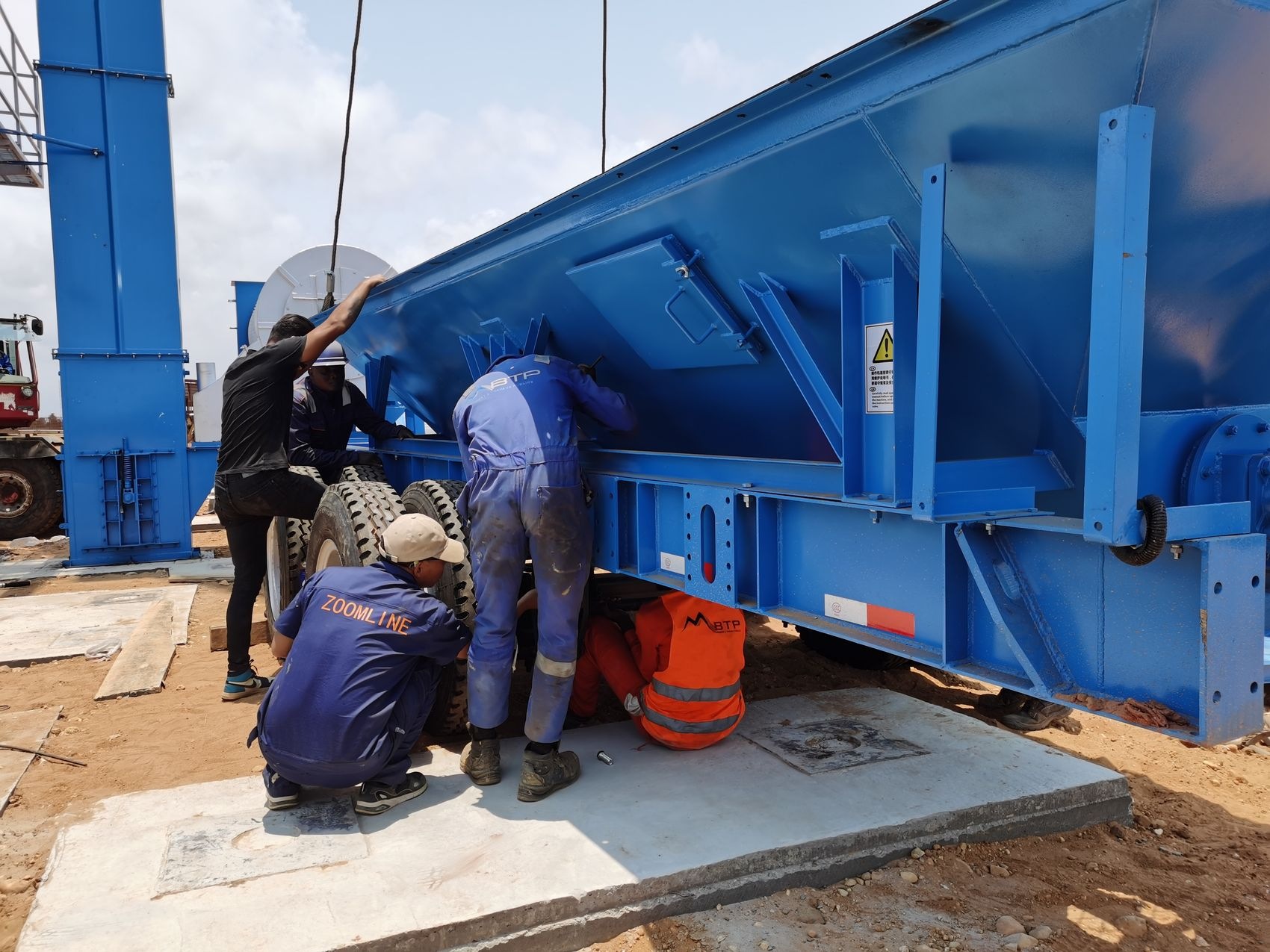
Seasonal and Long-Term Shutdown Maintenance
Before winter arrives, drain accumulated water from the equipment cooling system, asphalt pipelines, and compressed air storage tanks to prevent freezing and cracking; apply anti-rust grease to critical metal components, and cover electrical equipment such as motors and control cabinets with waterproof and dustproof covers; Dismantle and store small wear-prone parts separately; disconnect all power, air, and fuel supply valves; place desiccants in the dryer drum and hot material silo to reduce internal humidity; utilize downtime to conduct comprehensive non-destructive testing (e.g., ultrasonic testing, penetrant testing) on the equipment, and develop the next year’s major repair plan and spare parts procurement list.
Wear Parts Replacement
Establish a systematic lifecycle management ledger for wear-prone parts, and use a digital management platform to dynamically monitor critical components such as seals, conveyor belts, and filter cartridges. Install sensors on the equipment to collect real-time wear data, combine this with multi-dimensional parameters such as equipment runtime, operating temperature, and load intensity, and use predictive maintenance models to accurately predict component lifespan. For mechanical seals, regularly inspect the wear depth of the sealing surfaces and the spring elasticity coefficient. When the sealing surface has scratches deeper than 0.3mm or leakage exceeds 5ml/h, immediately initiate the replacement procedure. For O-rings, focus on hardness changes caused by aging. If surface cracking or loss of elasticity is detected, replace them promptly.
Conveyor belt maintenance follows a segmented inspection system, using infrared thermal imaging cameras to inspect joint vulcanization quality. For areas with wear exceeding 30% of the original thickness, steel wire breakage, or fabric layer peeling, cold vulcanization repairs or full-segment replacements are performed. Filter element management must strictly adhere to differential pressure monitoring standards. When the differential pressure across the hydraulic oil filter element exceeds the set threshold, or when the air filter element becomes clogged causing intake negative pressure greater than -250 Pa, immediately replace the filter element and simultaneously clean the filtration system piping. The replacement process must strictly follow the “three inspections and three verifications” principle (self-inspection, mutual inspection, specialized inspection; matching model, specifications, and batch), and use specialized tools to ensure installation accuracy. After replacement, conduct a 2-hour loaded test run, and verify component compatibility through vibration spectrum analysis and temperature monitoring to minimize downtime.
Operator training for asphalt plant maintenance
Regularly organize operators to participate in professional skill training, covering topics such as asphalt production process optimization, equipment maintenance techniques, fault diagnosis methods, and safety operating procedures. Through theoretical lectures, practical exercises, and case analyses, ensure operators master the correct operation and daily inspection skills of the equipment; establish a comprehensive production data reporting system, requiring operators to accurately record daily output, equipment operating parameters, and abnormal conditions; strengthen education on occupational health and safety regulations, conduct regular emergency drills, and enhance operators’ safety awareness and emergency response capabilities.
Safety & Maintenance Essentials
Power Source Management and Warning Standards
Strictly enforce the “Lockout/Tagout” (LOTO) procedure. Before equipment maintenance, all power sources (including electrical, hydraulic, and pneumatic) must be disconnected. Use specialized locks to secure switches and hang prominent “Do Not Operate” warning signs to ensure the equipment is completely shut down. Additionally, establish a maintenance work log, clearly designate operators and supervisors, and implement a dual confirmation mechanism.
Personal Protective Equipment (PPE) Standards
Workers must wear the appropriate full set of protective gear based on the type of work: high-temperature resistant gloves made of aramid material, capable of withstanding temperatures above 300°C; dust masks compliant with GB 2626-2019 standards, equipped with high-efficiency filter elements; and full-body safety harnesses must be worn during high-altitude work, securely connected to fall arrest anchor points. When handling chemicals such as asphalt, additional protective gear including chemical-resistant suits, goggles, and corrosion-resistant gloves must be worn.
Confined Space Work Control
Before entering confined spaces such as mixing tanks or storage silos, a four-in-one gas detector (oxygen, flammable gases, carbon monoxide, hydrogen sulfide) must be used for continuous monitoring to ensure oxygen concentration is between 19.5% and 23.5%, and harmful gas concentrations are below occupational exposure limits. Strictly enforce the “work permit system,” with safety supervisors signing approval documents and assigning dedicated personnel for external supervision, while equipping emergency rescue equipment.
Explosion-proof and Dust Control Measures
In high-dust areas such as drying drums and dust collectors, explosion-proof tools made of copper alloy or with a copper-plated surface must be used; ordinary steel tools are strictly prohibited. Regularly clean dust accumulation from equipment surfaces and pipelines, install dust concentration online monitoring devices, and immediately activate dust suppression measures and cease related operations when the concentration exceeds 25% of the lower explosive limit (LEL).
Importance of Maintenance Reports
Establish a standardized maintenance reporting system to document daily inspections, cleaning, lubrication, and specialized checks, including equipment operating parameters, abnormal phenomena, corrective actions, and replacement part information. Utilize equipment management software (e.g., EAM systems) to analyze maintenance historical data, predict equipment failure trends through big data analytics, and optimize maintenance schedules. Comprehensive maintenance records facilitate tracing the root causes of equipment issues, enabling preventive maintenance, reducing overall operational costs, and enhancing equipment performance.
Common Problems and Solutions
Mixer
Blade wear issues: As the core component of the mixer, blades are subject to prolonged friction with materials such as sand, gravel, and asphalt, leading to significant wear. The application of surface overlay welding with wear-resistant alloy technology can form a high-hardness protective layer on the original blade surface, significantly enhancing wear resistance. Meanwhile, tungsten carbide composite blades, with their superior hardness and impact resistance, serve as an ideal replacement solution for severely worn blades. It is recommended to establish a blade wear inspection log. When the wear depth exceeds one-third of the original thickness, timely repair or replacement should be conducted.
Asphalt Residue Accumulation: Asphalt tends to adhere to the inner walls and mixing shaft of the mixer at high temperatures. If not cleaned promptly, it can impair mixing quality and shorten equipment lifespan. When using specialized asphalt cleaning agents, strictly adhere to a 1:10 dilution ratio. Soak for 2–3 hours before starting low-speed mixing to assist cleaning. Additionally, optimize mixing time (recommended 45–60 seconds) and adjust mixing paddle angles (recommended 30°–45°) to minimize asphalt retention and adhesion within the mixer.
Drying Drum
Uneven heating: Burner flame misalignment, drum speed fluctuations, or insulation layer damage are the primary causes of uneven heating. Use an infrared thermal imaging camera to inspect the temperature distribution on the drum surface. If the temperature difference exceeds 50°C, immediately adjust the burner flame angle to ±5° from horizontal and stabilize the drum speed at 8–12 rpm. For damaged insulation layers, replace with high-temperature-resistant rock wool material to ensure the insulation layer thickness is no less than 100 mm.
Material adhesion and accumulation: Applying a nano-ceramic anti-adhesive coating to the inner wall of the drum can reduce material adhesion. Adjusting the angle of the lifting blades to 45°-60° and installing auxiliary dispersing devices can effectively enhance material tumbling. During routine inspections, if the thickness of material adhering to the inner wall of the drum exceeds 2 cm, the machine should be immediately shut down for cleaning.
Burner
Low fuel efficiency: Carbon buildup on the fuel nozzle, improper air-fuel ratio, and fuel line blockages can cause incomplete fuel combustion. Use a specialized cleaner to perform ultrasonic cleaning on the fuel nozzle monthly, calibrate the air-fuel ratio to 14.7:1 using a flue gas analyzer, and inspect the fuel line filter. Replace the filter element promptly when the pressure drop exceeds 0.3 MPa.
Ignition failure: Carbon buildup on the ignition electrode, excessive spark plug gap, or abnormal gas pressure can all cause ignition failures. Use a multimeter to measure the resistance of the ignition electrode (normal value < 1Ω), adjust the spark plug gap to 1.0-1.2mm, and install a pressure sensor to monitor gas pressure in real-time (range 0.05-0.1MPa).
Unstable flame: Adjust the damper opening to maintain the excess air ratio between 1.1 and 1.2. Clean the flame detector weekly and ensure the installation position is within 5 mm of the burner’s center axis to effectively improve flame stability.
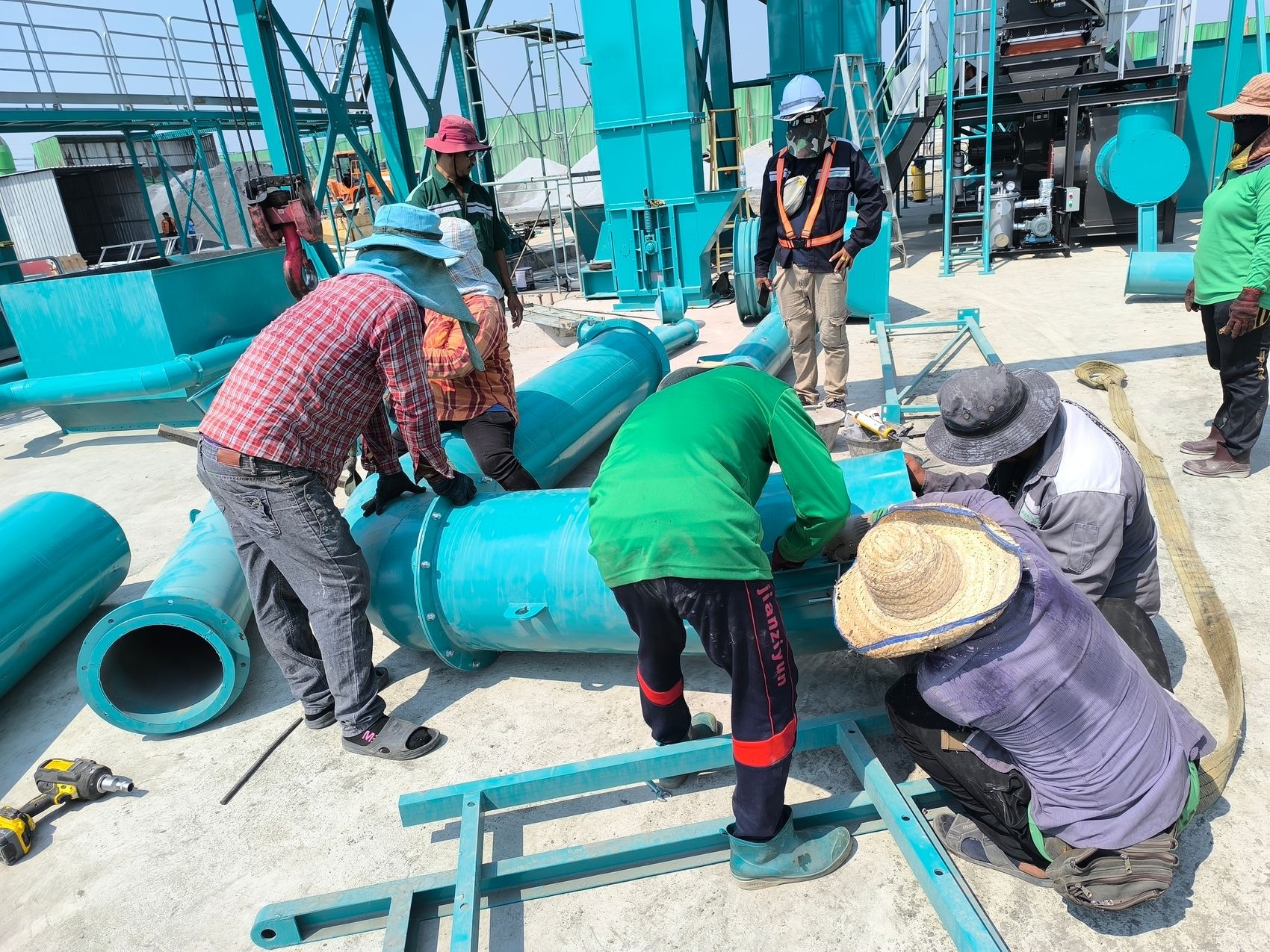
Baghouse Dust Collector
Filter Cartridge Blockage Prevention: Adopt a combined pulse cleaning strategy of timed (every 30 minutes) and pressure-based (pressure differential ≥1200 Pa) cleaning. Control the cleaning pressure between 0.4–0.6 MPa, and set the pulse width to 0.1–0.2 seconds.
Filter bag maintenance: Establish a filter bag permeability testing system, using a permeability tester to conduct monthly inspections. When permeability decreases by 30%, the filter bags must undergo deep cleaning; if the damaged area of a filter bag exceeds 10 cm², it should be replaced immediately, ensuring that the filtration precision of the new filter bag is no less than 2 μm to meet environmental emission requirements.
Control System
Software faults: When the PLC freezes, first power off and restart. If the fault persists, update the latest program patch via the programming software. For system crashes, restore the system backup file from the past 7 days. Ensure data backup before operation.
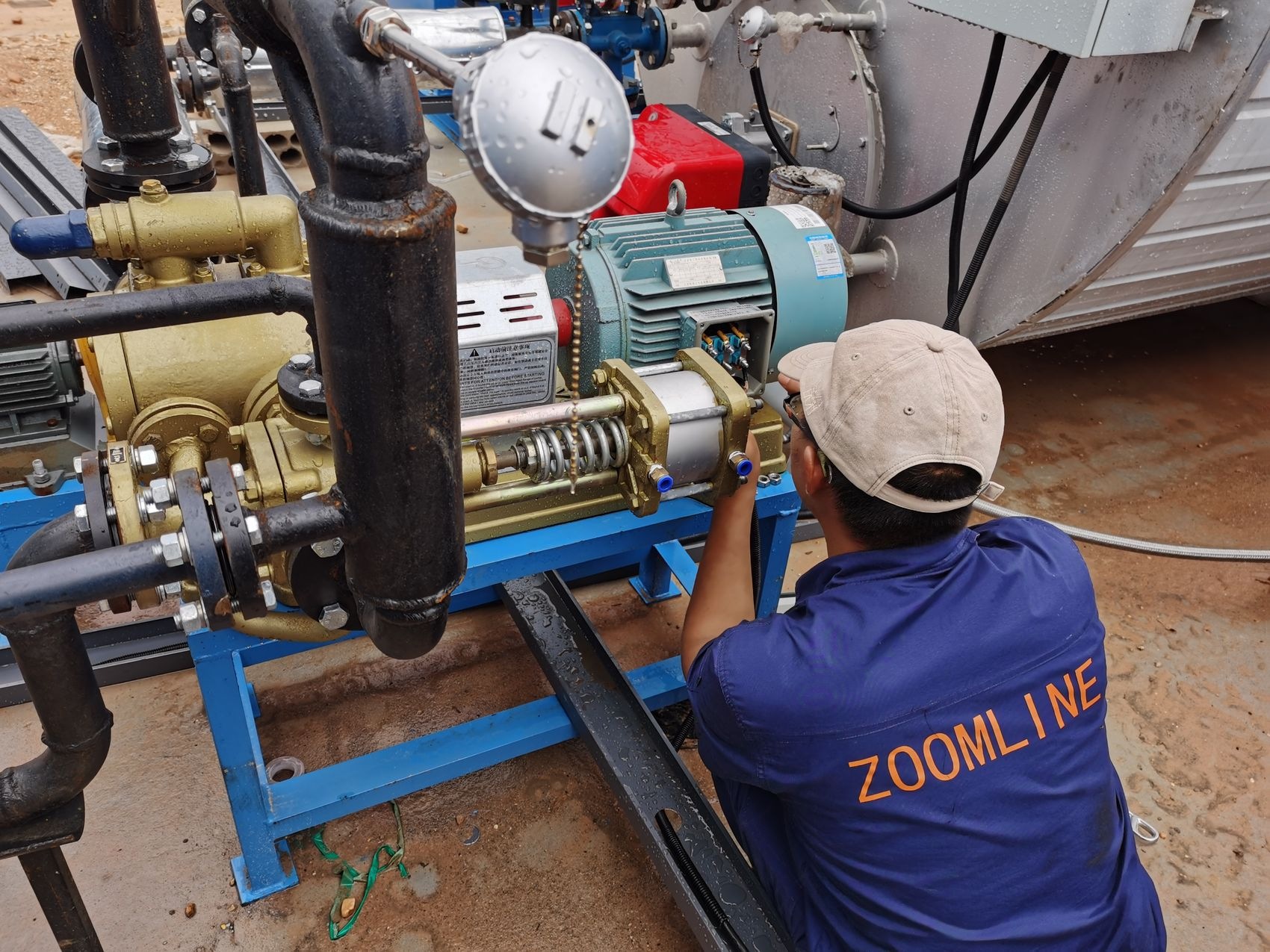
Sensor failure: Calibrate temperature, pressure, and other sensors using a standard signal generator, with error range controlled within ±0.5% FS. When inspecting signal transmission lines, use the segmented measurement method. Use a multimeter to test the continuity of the lines. If the resistance value exceeds 10Ω, replace the shielded cable.
Electrical faults: Use an oscilloscope to inspect the waveforms of the control circuit and a multimeter to measure voltage and current parameters. Follow the “from power source to load” inspection principle to quickly locate faults such as short circuits or open circuits, and strictly repair them according to the electrical schematic diagram.
Conclusion on Maintenance of Asphalt Plant
Preventive maintenance of asphalt mixing plants is a core strategy for ensuring stable equipment operation and improving production efficiency. Through systematic and standardized maintenance management, equipment failure rates can be significantly reduced, downtime losses minimized, equipment lifespan extended, and production safety and environmental compliance levels enhanced. It is recommended that companies establish long-term partnerships with high-quality equipment suppliers, adopt advanced intelligent maintenance technologies, and continuously optimize maintenance strategies to provide reliable asphalt mixture supply support for road construction projects.


